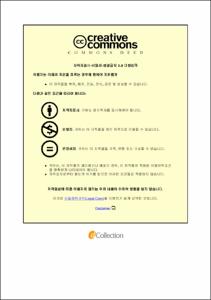건식 용융환원을 통한 폐 알루미늄분진으로부터 합성 제올라이트 제조 연구
- Abstract
- Abstract
This study conducted a study on the production of synthetic zeolite from waste aluminum dust through dry melt reduction. The sample used in the study used dust generated by domestic aluminum processing companies. 100g of aluminum dust, 70g of SiO2 and 5g of carbon were added with flux to melt-reduce at 1,600°C, and a graphite crucible was used as the crucible. Melting reduction was performed while Ar 300cc/min was injected. The reduced metal was recovered in the form of metal, and SiO2 and Al2O3 as zeolite synthesis raw materials were recovered with molten slag. The specific gravity difference between the reduced metal and the molten slag was used to separate the metal. A zeolite synthesis process using a NaOH solution was carried out from the reduction slag, and the synthesis reaction was carried out by mixing 10 g of the reduction slag and 50 wt.% NaOH solution with 50 ml. As a result of XRD analysis, Na-A type zeolite synthesis was confirmed under the conditions of reaction temperature of 90°C, reaction time of 24 hours, and 300 rpm. An experiment was conducted to remove four heavy metal solutions (Pb, Cd, Cr6+, Hg) using Zeolite LTA of the same phase as the produced aluminum dust zeolite. 50 ml of a 100 ppm heavy metal solution and 2g of synthetic zeolite were mixed and stirred at a speed of 300rpm for 10, 30, 60, 90, and 120 minutes. The concentration of the solution before and after stirring was analyzed by ICP-OES. Similar removal rates were confirmed for both zeolite, and it was confirmed that a raw material for zeolite recovered from waste aluminum dust could be used as a synthetic zeolite raw material.
- Issued Date
- 2022
- Awarded Date
- 2022. 8
- Type
- Dissertation
- Publisher
- 부경대학교
- Affiliation
- 부경대학교 대학원
- Department
- 대학원 마린융합디자인공학과
- Advisor
- 왕제필
- Table Of Contents
- Ⅰ. 서론 1
1.1 연구 배경 및 목적 1
1.2 연구의 필요성 4
Ⅱ. 이론적 배경 6
2.1 알루미늄 분진의 개요 6
2.1.1 알루미늄 분진의 정의 6
2.1.2 알루미늄 분진의 처리 6
2.1.3 알루미늄 분진의 위험성 7
2.2 알루미늄 분진의 리싸이클링 기술 8
2.2.1 제강 Flux로의 활용 9
2.2.2 시멘트 원료로의 활용 10
2.2.3 알루미늄 분진 리싸이클링 기술 관련 동향 11
2.3 제올라이트의 개요 12
2.3.1 제올라이트의 정의 12
2.3.2 흡착 특성 13
2.3.3 촉매 특성 14
2.3.4 탈수 및 재흡수 특성 15
2.3.5 이온 교환 특성 15
Ⅲ. 실험 재료 및 방법 17
3.1 실험 재료 및 장비 17
3.1.1 성분분석 17
3.1.2 실험 장비 19
3.2 실험 방법 22
3.2.1 실험 목적 22
3.2.2 열역학적 메커니즘 분석 24
3.2.3 용융환원반응 26
3.2.4 슬래그 분리 27
3.2.5 제올라이트 합성 28
3.2.6 수세 및 여과 29
3.2.7 건조 29
3.2.8 중금속 제거 실험 30
Ⅳ. 실험 결과 및 고찰 31
4.1 용융환원실험 31
4.1.1 SiO2 첨가에 따른 슬래그의 용융 31
4.1.2 Carbon 첨가에 따른 슬래그 내 금속산화물의 변화 35
4.1.3 알루미늄 분진 용융환원 최적 조건 산출 38
4.2 제올라이트 합성 40
4.2.1 제올라이트 합성에 미치는 합성 온도의 영향 40
4.2.2 제올라이트 합성에 미치는 시간의 영향 43
4.3 중금속 제거율 비교 46
Ⅴ. 결론 50
Ⅵ. 참고문헌 52
- Degree
- Master
- Appears in Collections:
- 대학원 > 마린융합디자인공학과
- Files in This Item:
-
-
Download
 건식 용융환원을 통한 폐 알루미늄분진으로부터 합성 제올라이트 제조 연구.pdf
기타 데이터 / 1.45 MB / Adobe PDF
건식 용융환원을 통한 폐 알루미늄분진으로부터 합성 제올라이트 제조 연구.pdf
기타 데이터 / 1.45 MB / Adobe PDF
-
Items in Repository are protected by copyright, with all rights reserved, unless otherwise indicated.